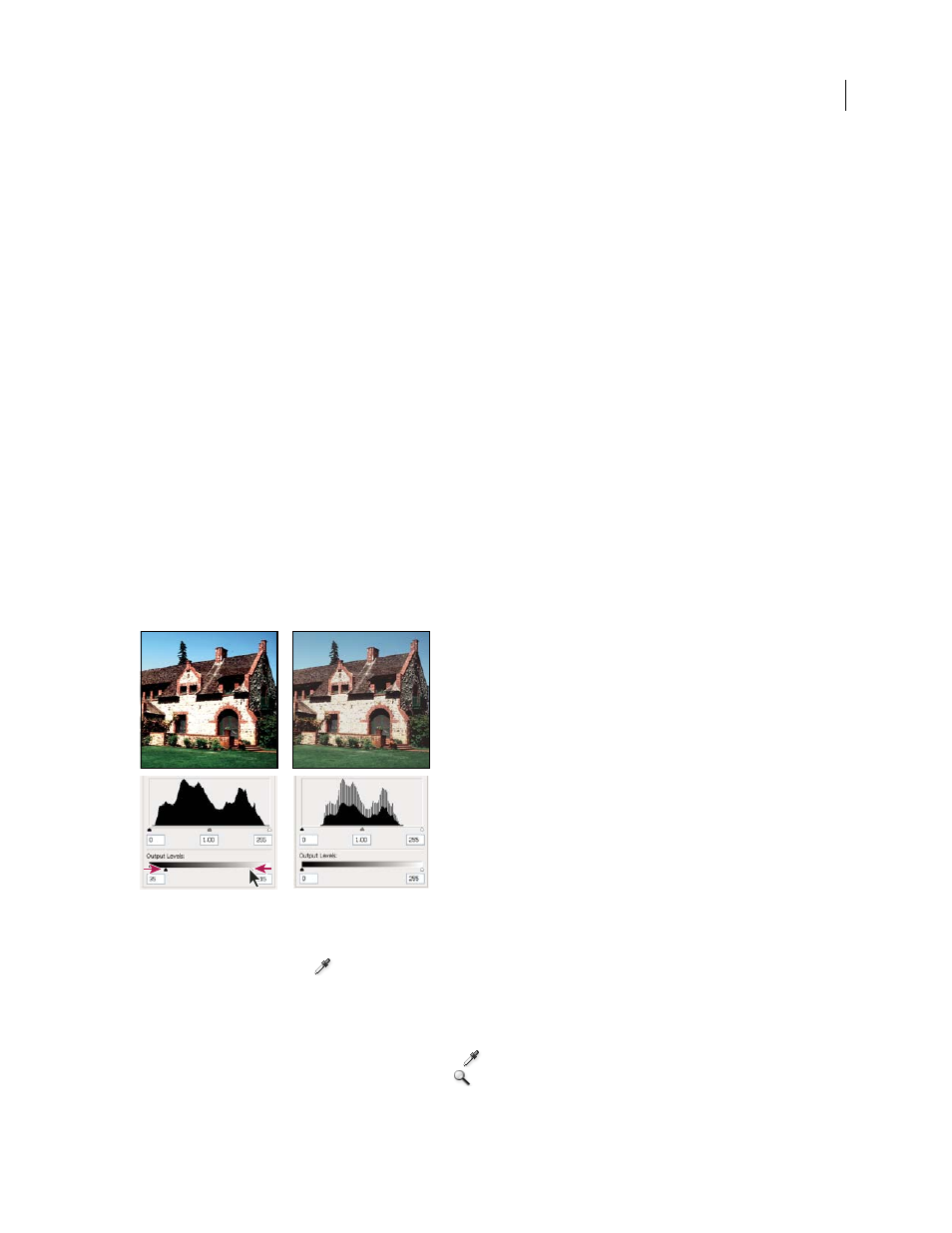Targeting images for press, Setting highlight and shadow target values, To set target values using the eyedroppers – Adobe Photoshop CS3 User Manual
Page 181

PHOTOSHOP CS3
User Guide
174
Targeting images for press
Setting highlight and shadow target values
Assigning (targeting) an image’s highlight and shadow values is necessary because most output devices (usually
printing presses) cannot print detail in the blackest shadow values (near level 0) or the whitest highlight values (near
level 255). Specifying the minimum shadow level and maximum highlight level helps to bring the important shadow
and highlight details within the gamut of the output device.
If you are printing an image on a desktop printer and your system is color-managed, you don’t need to set target
values. The Photoshop color management system automatically makes adjustments to the image you see on the
screen so that it prints properly on your profiled desktop printer.
Using Levels to preserve highlight and shadow details for printing
The Output Levels sliders let you set the shadow and highlight levels to compress the image into a range less than 0
to 255. Use this adjustment to preserve the shadow and highlight details when an image is being printed on a press
whose characteristics you know. For example, suppose there are important image details in the highlights with a
value of 245, and the printing press that you’re using won’t hold a dot smaller than 5%. You can pull the highlight
slider to level 242 (which is a 5% dot on the press) to shift the highlight detail from 245 to 242. Now, the highlight
detail will safely print on that press.
Generally, it is not a good idea to use the Output Levels sliders to target images with specular highlights. Your
specular highlight will look gray rather than blow out to pure white. Use the highlight eyedropper for images with
specular highlights.
Targeting shadows and highlights with Output Levels sliders
To set target values using the eyedroppers
1
Select the Eyedropper tool
in the toolbox. You can choose 3 by 3 Average from the Sample Size menu in the
Eyedropper tool options. This ensures a representative sample of an area rather than the value of a single screen pixel.
2
Open the Levels or Curves dialog box. Choose Image > Adjustments, and then choose Levels or Curves. You can
also use an adjustment layer.
When you open Levels or Curves, the Eyedropper tool
is active outside the dialog box. You still have access to
the scroll controls, the Hand tool, and the Zoom tool
through keyboard shortcuts.
